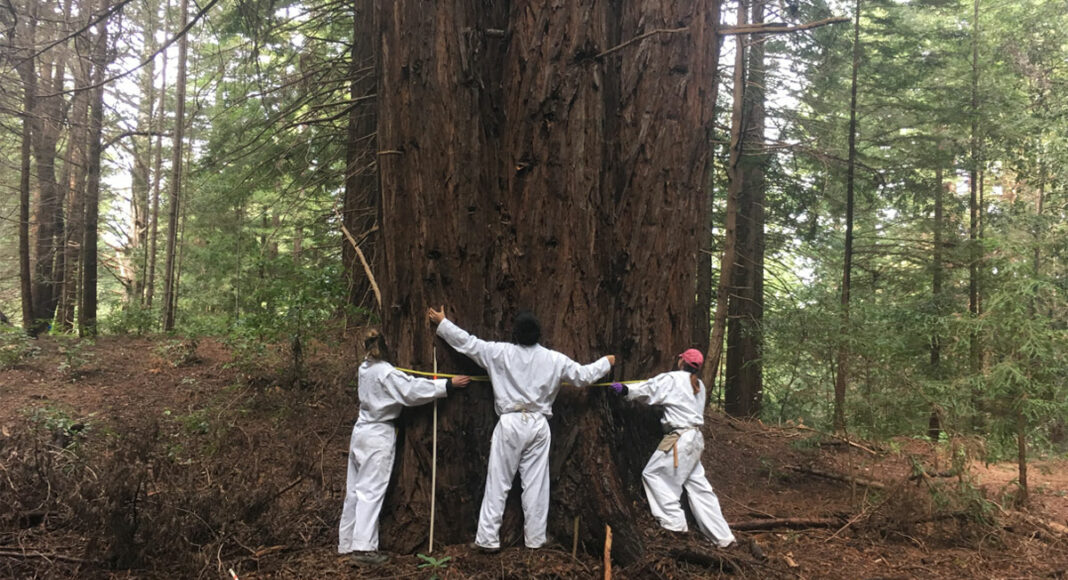Every two weeks for over 13 years, students at UCSC checked nets set up around a 40-acre forest. They painstakingly counted trapped seeds and measured every nearby tree. Now, the data is helping scientists understand some of the subtler effects of climate change.
A new study combined the students’ work with data from 48 institutions across North America to reveal a concerning trend: climate change limits the seed production of large trees in West Coast forests.
Branching out for data
The Forest Ecology Research Plot (FERP) acts as an outdoor laboratory, providing a place to study forests over the long term.
“The really special thing about the FERP is that it’s entirely student-powered,” says Greg Gilbert, the founding director and a professor of environmental studies at UCSC. Over the years, hundreds of students helped collect the data that went into the project.
Scientists say long-term, collaborative studies like this one are necessary for understanding the regional effects of climate change. “I think this is a growing trend,” says Kai Zhu, an assistant professor of environmental studies at UCSC and a co-author of the study.
Lots of global predictions come from computer models and satellite imagery. But Zhu says predicting changes in ecology “is only going to be possible if you have the data from the ground.”
A new normal taking root
Trees tend to produce more seeds as they grow. But once they reach a certain size, that production slows down. The study finds that temperature and moisture changes associated with climate change make it even harder for older, larger trees to reproduce.
Coupled with diseases like Sudden Oak Death and more frequent wildfires, this trend could change the diversity of our forests.
“There are some species in the forest that are really resistant to fire,” says Gilbert.
Redwoods and certain chaparral species come back easily. But others—such as madrones, maples, tanoaks and ponderosa pines—do not.
“Those may only come back into the system if there’s a good seed source available,” says Gilbert. “As fire frequency increases, you end up favoring only those species that are able to either resist burning or stump sprout and come back up from that.”
But researchers don’t expect to see widespread changes anytime soon. “This is going to be happening over the course of decades,” says Gilbert.














